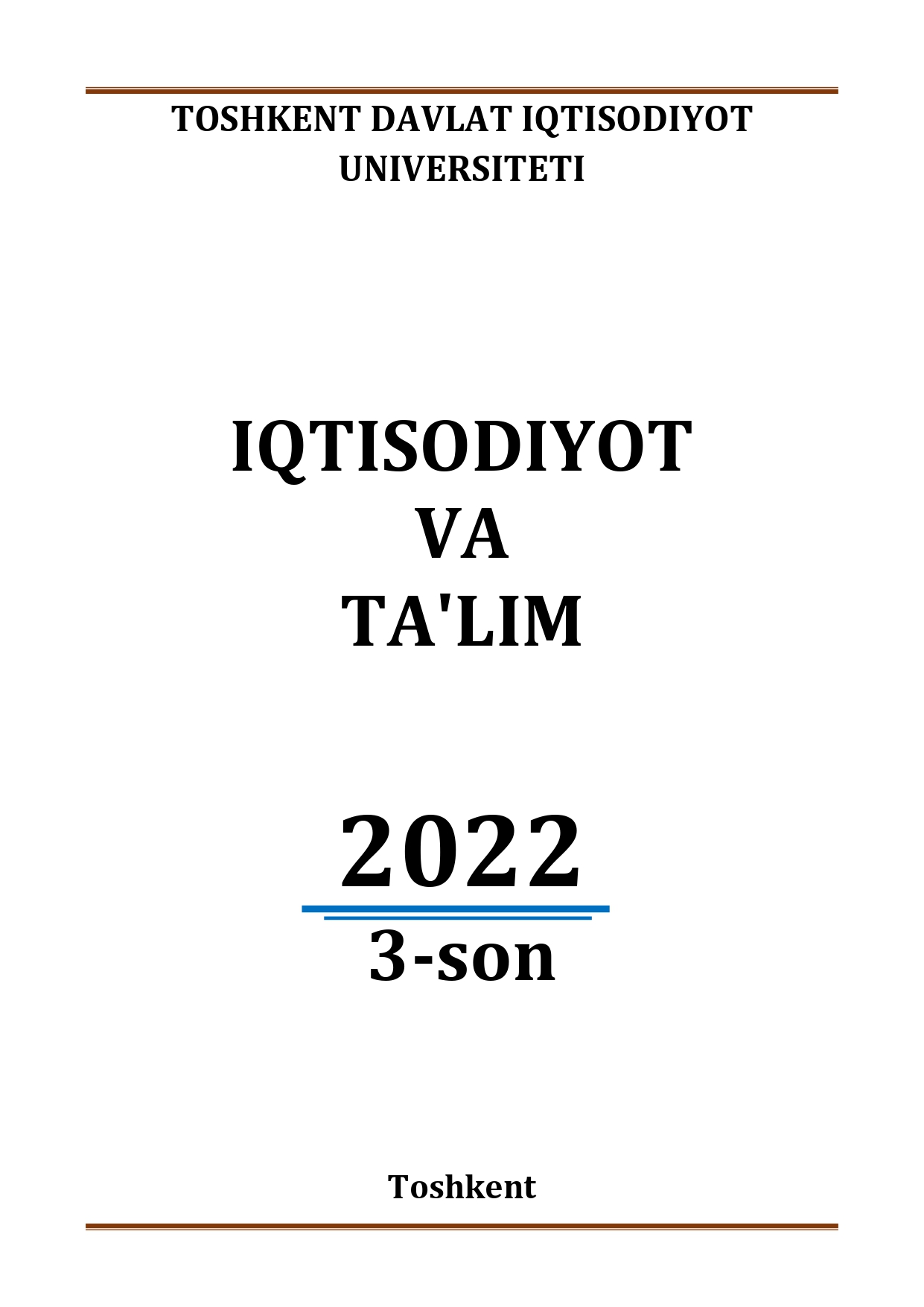Abstract
Accessible tertiary education for women is a comparatively new phenomenon, which appeared only after the second part of the XIX century. Nevertheless, in developed countries, men are gaining fewer degrees and also attending less higher education since mid-1990 (Vincent-Lancrin S., 2008) [3], thus inequality for women is eradicated. However, developing countries still have much to do to overcome this issue. Because girls are seen only as domestic helpers with passive roles, what is worse, society still assumes that the main responsibility of a girl is a continuation of the generation. Particularly, in our country, it is more challenging for a woman to find a job in the private sector rather than for a man. If to consider that almost half of our population are women (50.11 %), it could be reckoned that we are losing half of our potential. This paper will discuss and explain several problems for girls in the path for their wish to obtain higher education and offer some possible solutions to solve this problem.
References
Constitution of the Republic of Uzbekistan. Chapter IX. Article 41.
stat.uz - according to the official website of the Statistics Committee of the Republic of Uzbekistan.
Vincent-Lancrin S. The Reversal of Gender Inequalities in Higher Education. Higher education to 2030 – Volume 1: demography – ISBN 978-92-64-04065-6 – © OECD 2008
Smirnov, A. G. (1972). Education in developing countries. Soviet Education, 14(10), 65–70. https://doi.org/10.2753/RES1060-9393141065
Sperling, G. B., Winthrop, R., & Kwauk, C. (2016). What Works in Girls’ Education (Issue January).
Women in higher education: has the female advantage put an end to gender inequalities? https://unesdoc.unesco.org/ark:/48223/pf0000377182
Smagina, O. (2020). Gender and job satisfaction in higher education institution: Case study from uzbekistan. Journal of Eastern European and Central Asian Research, 7(2), 219–229. https://doi.org/10.15549/jeecar.v7i2.392
Patrinos, H. A., Psacharopoulos, G., & Tansel, A. (2019). Returns to Investment in Education: The Case of Turkey. SSRN Electronic Journal, March. https://doi.org/10.2139/ssrn.3358397
Patrinos, H. (2016). Estimating the return to schooling using the Mincer equation. IZA World of Labor, July, 1–11. https://doi.org/10.15185/izawol.278
Osiobe, E. U., Osiobe, A., Foundation, I., Osiobe, S. A., Osiobe, A., Foundation, I., Osiobe, O., Osiobe, A., & Foundation, I. (2020). Female education a way Forward ! Female education a way Forward ! i. September.
Masroor, N., Asim, M., & Hussain, S. (2020). E-Commerce: A Gateway to Mobilizing Female Entrepreneurs in the Digital Era. International Journal of Advance Science and Technology, 29(10), 1–17.
Maksutova, K. (2004). A Comparative Study of Higher Education Reforms of three Central Asian Countries :
Maguain, D. (2007). Returns to Education: an International Comparison. Economie et Prevision, 180–181(4–5), 87–106. https://doi.org/10.3406/ecop.2007.7673
Ma, X. (2021). Female Employment and Gender Gaps in Chinanull. https://library.oapen.org/bitstream/20.500.12657/48696/1/9789813369047.pdf
Lancrin, S. V. (2008). The reversal of gender inequalities in higher education: An on-going trend. In OECD Higher Education to 2030 (Vol. 1).
Johnson, H. L. (2017). Pipelines, Pathways, and Institutional Leadership. American Council on Education. https://vtechworks.lib.vt.edu/handle/10919/84062
Fasih, T., Patrinos, H. A., & Shafiq, M. N. (2021). Economic Crises and Returns to University Education in Middle-Income Countries: Stylized Facts and COVID-19 Projections. Current Issues in Comparative Education, 23(1). https://doi.org/10.52214/cice.v23i1.8138
Caamal-Olvera, C. (2014). Gender Differences in the Returns to Education in Mexico. Journal of Business and Policy Research, 9(1), 65–80. https://doi.org/10.21102/jbpr.2014.07.91.04
Asian Development Bank. (2018). Uzbekistan Country Gender Assessment Update (Issue december). https://www.adb.org/documents/uzbekistan-gender-assessment-update
Alabi, O. (2018). Financing female Higher Education: Lessons from the Experiences of Female Post-Graduate Students. Researchgate.Net, 2(1), 1–18. https://www.researchgate.net/publication/326734971
Siddiqa, A. (2018). Status of Women in Islam and the Present Indian Scenario. 3(February), 1–12.
Zaman, N. U., Bibi, Z., & Karim, J. (2018). Why Girls Disown Business Education: A Qualitative Study. Bulletin of Education and Research, 40(2), 41–63
Raj, A., Salazar, M., Jackson, E. C., Wyss, N., McClendon, K. A., Khanna, A., Belayneh, Y., & McDougal, L. (2019). Students and brides: A qualitative analysis of the relationship between girls’ education and early marriage in Ethiopia and India. BMC Public Health, 19(1), 1–20. https://doi.org/10.1186/s12889-018-6340-6
Yusupov, Yu., Uzbekistan: women earn less, less educated and less equal. (Узбекистан: женщины меньше получают, менее образованны, менее равны) Interview by Matviyenko, I., 2020.
Sabzaliyeva, E. Gender gaps in higher education across Central Asia. Invited commentary for University World News, July 2016.
https://unesdoc.unesco.org - prepared by the authors based on the data of UNESCO
Hamdan, A., Sarea, A., Khamis, R., & Anasweh, M. (2020). A causality analysis of the link between higher education and economic development: empirical evidence. Heliyon, 6(6), e04046. https://doi.org/10.1016/j.heliyon.2020.e04046
Malinowski, M., & Jabłońska-Porzuczek, L. (2020). Female activity and education levels in selected European Union countries. Research in Economics, 74(2), 153–173. https://doi.org/10.1016/j.rie.2020.04.002

This work is licensed under a Creative Commons Attribution-ShareAlike 4.0 International License.
Copyright (c) 2022 Economics and education
